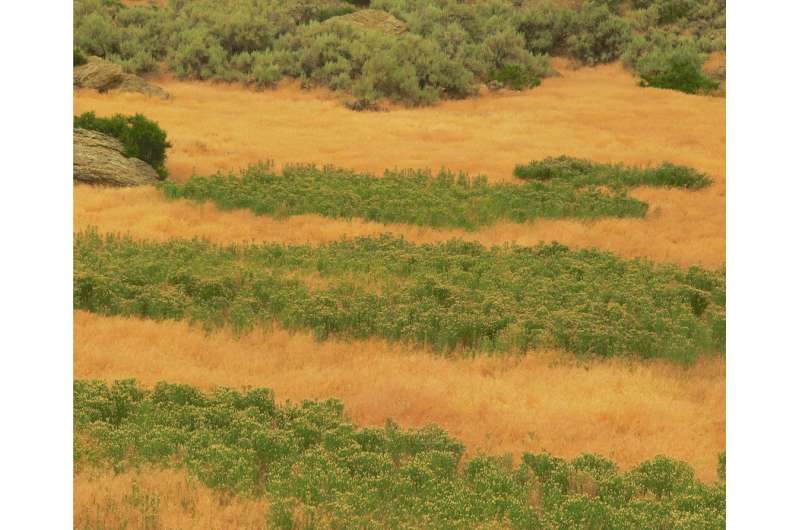DNA provides new insights on the control of invasive Russian knapweed

A recent study featured in the journal Invasive Plant Science and Management sheds new light on the control of Russian knapweed, an invasive plant found in the western U.S.
Russian knapweed grows in dense patches that can survive for decades. It can crowd out more valuable forage plants and is toxic to horses. As a result, it is classified as a noxious weed in 18 U.S. states.
Russian knapweed can spread two ways - by seed and by new shoots that emerge from root growth. To date it has been unclear which method is most common in local invasions, which makes it hard to develop an effective management plan.
To shed light on the best control methods, scientists from the USDA Agricultural Research Service and Montana State University analyzed DNA samples collected from six patches of Russian knapweed. The analysis showed each patch was largely or entirely composed of a single plant genotype, which indicates localized patches were spreading from Russian knapweed roots. Seed dispersal was shown to be the source of new patches, though, since each of the patches investigated was genetically distinct from other patches studied.
"Our findings provide important insights in how to best manage localized knapweed outbreaks," says John Gaskin, a botanist with the USDA Agricultural Research Service. "Controlling seed development may be effective at stopping long-distance dispersal of knapweed to create new patches, but is unlikely to control expansion of existing patches."
Land managers may want to reevaluate the controls they use based on the study findings. For example, with biological control, two of the three agents approved for use on Russian knapweed in the U.S. - a gall midge and a nematode - reduce seed production and above ground growth, thereby helping to reduce long-distance dispersal. The third biological control agent - a gall wasp - is able to stress existing Russian knapweed plants and thus may be more effective at controlling the growth of individual Russian knapweed patches.
More information: John F. Gaskin et al, Invasive Russian Knapweed (Acroptilon repens) Creates Large Patches Almost Entirely by Rhizomic Growth, Invasive Plant Science and Management (2017). DOI: 10.1017/inp.2017.9
Provided by Cambridge University Press

















